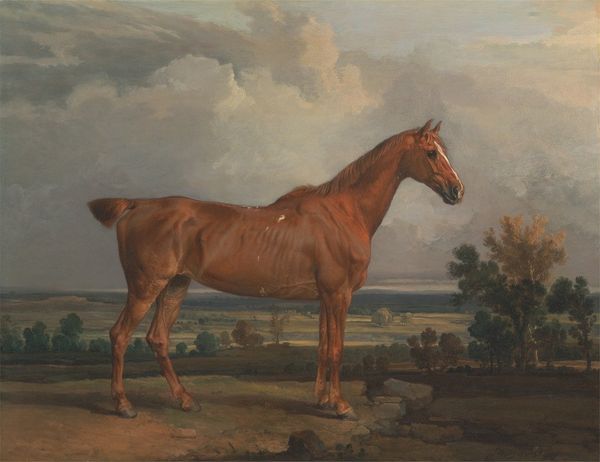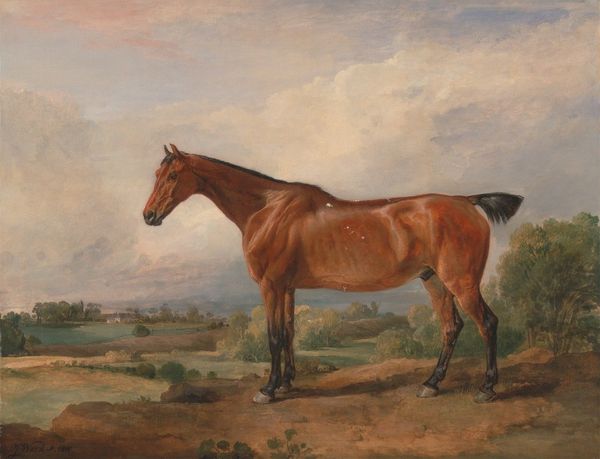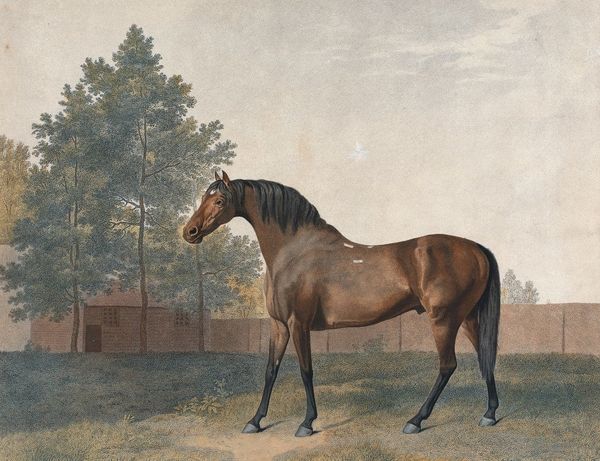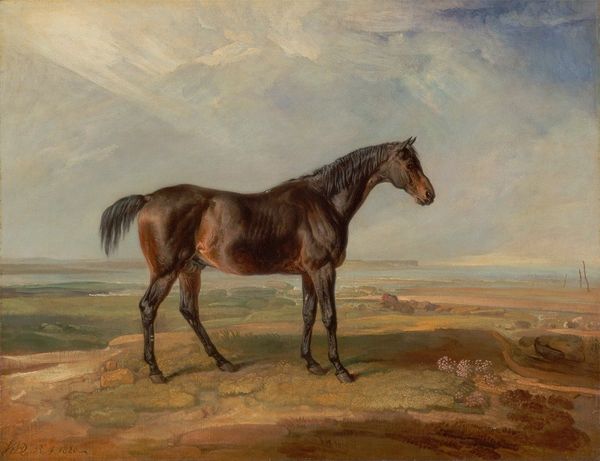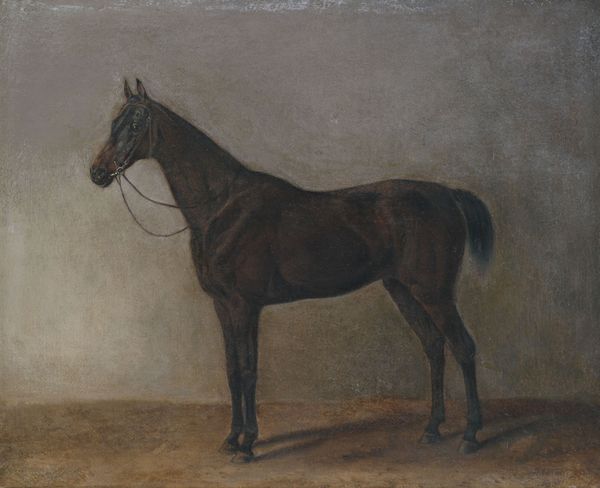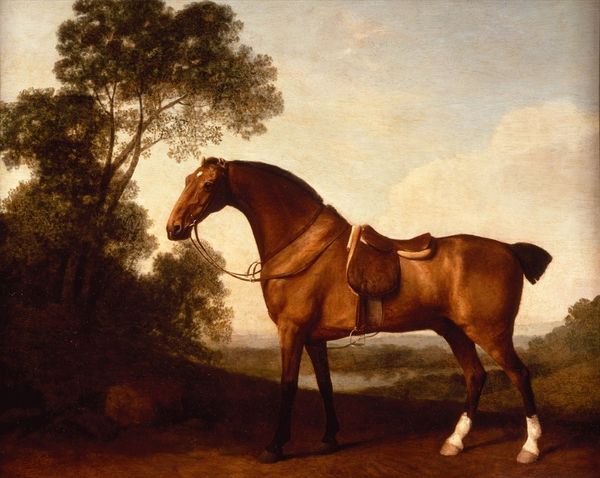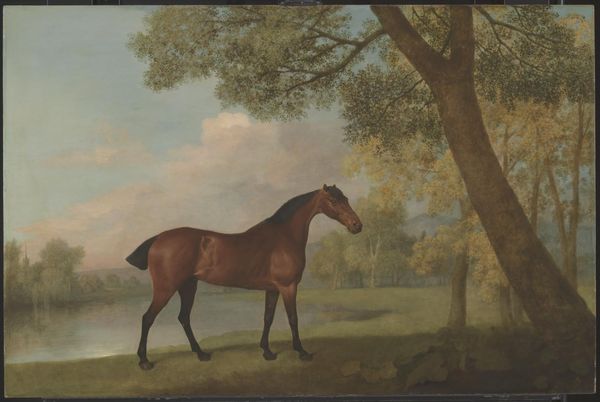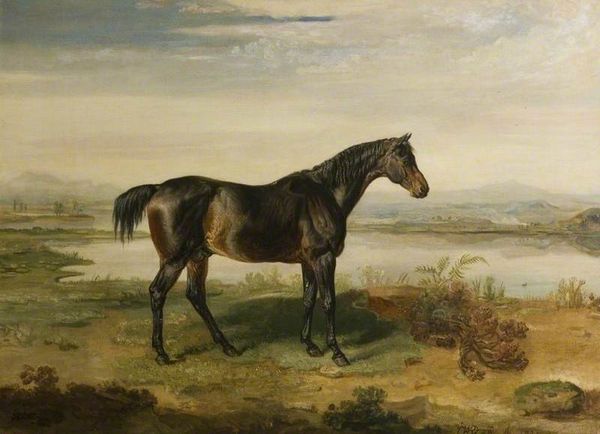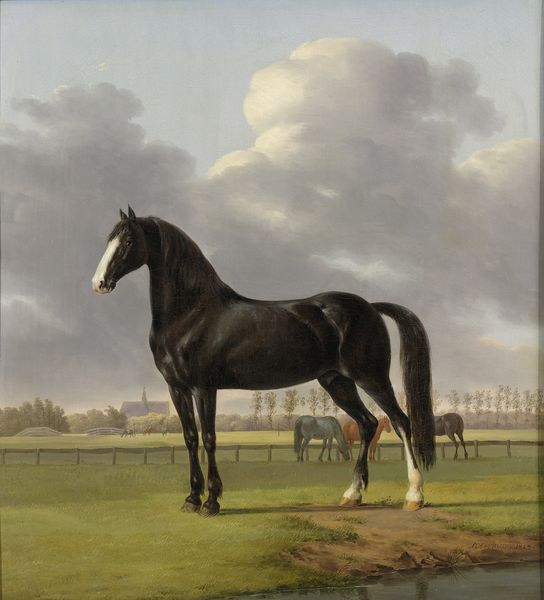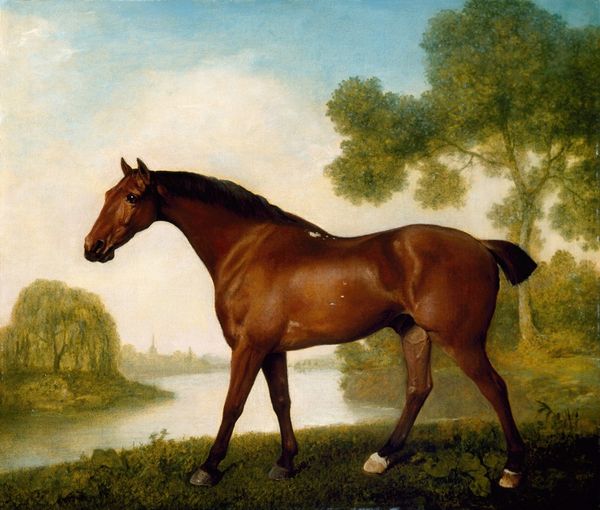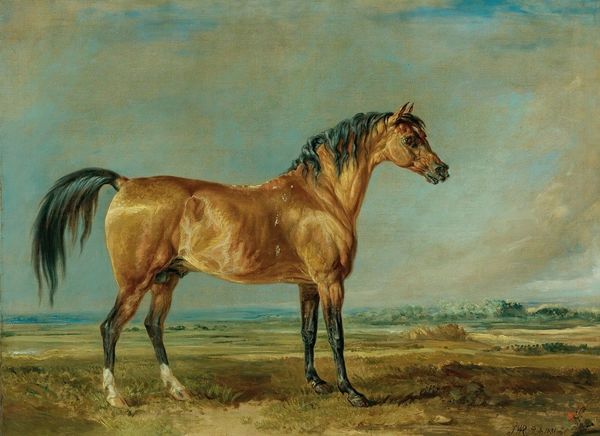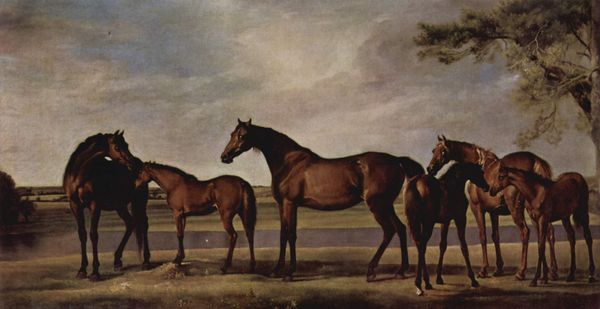
painting, plein-air, oil-paint
#
portrait
#
animal
#
painting
#
plein-air
#
oil-paint
#
landscape
#
charcoal drawing
#
oil painting
#
romanticism
#
animal portrait
Copyright: Public Domain: Artvee
Curator: John Constable painted this study, titled "Golding Constable's Black Riding-Horse." The canvas offers an intriguing glimpse into his artistic process. Editor: Immediately, I am struck by the somber, almost melancholic tone despite being set within a landscape. The dark horse against the subdued backdrop evokes a sense of quiet introspection. Curator: This study perhaps reveals more about class and labor practices than intended. Equestrian portraits were commonly associated with wealth and status, marking the ownership of the horse as a power statement. Editor: I think we should also note how the image normalizes a social hierarchy. Consider how labor roles become visualized and ossified. The horse is an animal of labor being simultaneously commodified and admired. This echoes how workers are idealized while being exploited for labor. Curator: Interesting point. But let’s not disregard Constable's dedication to the plein-air method; this aligns with broader Romantic tendencies toward unfiltered nature and personal observation. His art reflects an idealization of rural England and also served as an informal document of labor. Editor: Definitely, and that complicates any single interpretation! The loose brushwork and attention to the sky demonstrate Romanticism, as well as how these pieces simultaneously documented the natural and social spheres. These are very powerful paintings to inspire thinking about the nuances of nature, identity, and power. Curator: Precisely. Constable masterfully captures atmospheric conditions but there is so much unsaid about land use and ownership. His approach, blending scientific accuracy with sentimental value, shaped our vision of the English countryside. Editor: Looking at how Constable situated labor in "Golding Constable's Black Riding-Horse," prompts questions about visibility, about the overlooked or intentionally hidden parts of life and society in those eras, doesn’t it? Curator: I agree, it opens those very questions and contributes, like so many other works from the Romantic period, to conversations about those very inequalities that remain relevant.
Comments
No comments
Be the first to comment and join the conversation on the ultimate creative platform.
